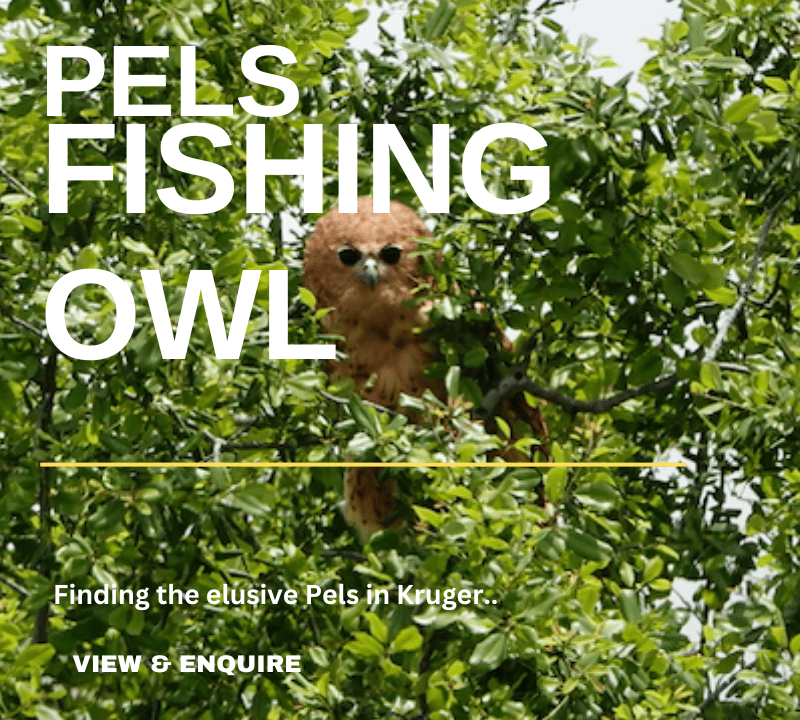
Cheetah
(Acinonyx jubatus)
Origin of the name
The vernacular name, Cheetah, is comes from ‘ cītā’, which comes from the old Sanskrit word ‘citra’ meaning variegated, adorned or painted. The generic name, Acinonyx, is derived from the combination of two Greek words: ‘akinitos’ meaning unmoved or motionless, and ‘onyx’ meaning nail – this is essentially a rather rough translation of the ‘immobile nails’, which is a reference to the Cheetah’s limited capability it has in retract its claws. The Latin word ‘jubatus’ means having a mane or crest, i.e. crested. This is a rather muddled name which in the end would be the “Crested Motionless immovable Nails” species.
There is however another vernacular translation thats says it is derived from the Hindi word chiitaa which comes from the sanskrit chitraka meaning the “spotted one”.
The Cheetahs Body:
Cheetahs are a relatively large measuring 2 m from the head to end of tail and 0.8 m at the shoulder. Being the worlds fastest land mammal it too has of course evolved over time and and this is evident in its physiology. Cheetah have a deeply indented chest which accommodates for the large lungs and heart which are the two main organs required to power this speedsters engine. They also have large paws with unretracted claws for grip and a tail that is much long er than most as it to has purpose and acts as a counterbalance steering the cheetah’s body when running at high speed.
The Cheetah’s head is rather small in proportion to its body but makes it more streamlined and has smaller ears to accommodate their design. Cheetah are easily recognised by distinct ‘tear marks’ which curve downwards from the tear-duct corners of the eyes to the corners of the mouth. A feature that is said to reduce glare on a bright and open savanna plain.
To accompany the large set of lungs, their small head and reduced dentition has made additional room for larger nasal aperture which improve their oxygen intake whilst at full sprint. On top of that they have modified and aerodynamic nostrils to capture and maximise the flow of air through their energising coolant system.
Speed and movement:
Cheetahs have been designed for speed and well known for being the worlds fastest land mammals. With many numbers being tossed around the truth is that they can reach speeds between 75–100 km/h at a full sprint. Their small heads, long legs, long flexible spines and narrow shoulders and hips all work together to enable it to reach these high speeds.
BBC Video credit
Communicating:
The cheetah is a fairly vocal feline. It purrs like a house cat when content or when greeting other known individuals in its family group. They however also do growl, which is all to often accompanied by a sort of loud sharp hissing and spitting. This is typical behaviour when a Cheetah is faced with danger or a precarious situation. In addition to their hissing, spitting and growling they will also hit the ground with their front paws. This also creates a further load and aggressive thud and accompanied with their agnostic type calls is meaningful display that says “leave me alone”.
Perhaps the most fascinating call of all is their bird like chirp. Cheetah chirp when excited and can even stutter slightly. This particular call is used to attract other Cheetah in their social meetings, courtship or in an attempt to find another individual or youngster. A mother Cheetah searching for her cubs will use this chirp and the sound can be heard roughly 2km away and often confused with a bird.
Distribution in Africa and the Kruger National Park:
Historically cheetahs were distributed widely throughout Africa and occupied an extensive range of the continent. Over the past century however the known range has more than drastically reduced by 90%. This is a direct result if human encroachment and land pressure. Today there are roughly 6 700 adults across 29 subpopulations left in the wild. The two largest meta-populations occur in East Africa and southern Africa. Today in the Kruger National Park there is an estimated 427 adult individuals with the majority population found in the central and souther regions of the Park.
Cheetah over the past 30 years have been studied extensively in South African parks with the core research being in Kruger as a result of it having the largest population group. A 2005 census was conducted in the Kruger National Park by both SANParks (South African National Parks) and the EWT (Endangered Wildlife Trust) and collectively they managed to count 103 Cheetah in the Kruger as well as private nature reserves along the western boundary. This was then redone in 2009 showing an increase with 192 photographed individuals suggesting that there was gros error in 2005. The majority of these individuals, some 92 animals, where found in the 4,057 sqkm southern region that lies between the Crocodile and Sabie river systems. Only 69 individuals were seen and photographed above the Sabie river into the central region which expands some 6, 192 sqkm. The remaining animals where found in the far norther region above the Letaba river which makes up 11,102 sqkm. The 11 individuals photographed in this region were documented but researches noted that they didn’t believe that they had managed to completely find every animal. What the 2009 research also indicated was that adult animals far outweighed young and that females without young far outweighed the ratios seen in other reserves. What is noted by Mich Reardon is that its probable that that the reduced populations of Cheetah found north of the Sabie river probably is a direct correlation to the Increased Lion densities documented by Tol Pienaar in the 70’s.
Habitat:
Cheetahs can be found in a wide range of habitats and eco-regions, ranging from dry forest and thick scrub through to grassland and hyper-arid deserts, such as the Sahara. They are only absent from tropical and montane forest. There are reports of cheetah at altitudes of 4 000 m. Possibly the distribution of their prey may influence their habitat preferences. Ideally, an open area with some cover, such as dispersed bushes, because it needs to stalk and pursue its prey over a distance, exploiting its speed. This also minimises the risk of encountering larger carnivores. They will drink when water is available hence the presence or absence of this resource is not an essential habitat requirement. Cheetahs have large home ranges within which there is a specific area which they prefer and will return to.
Food:
Cheetahs are diurnal predators (hunt during the day) to avoid the risk of the presence of larger predators. Although they are diurnal, they prefer hunting or moving around in the cooler morning and late afternoon (crepuscular). For a hunt to be successful, cheetahs need to get as close as possible to their prey, before starting the final sprint. This making them accomplished stalkers.
Cheetahs hunt in open areas, however they make use of any form of cover available to them or simply just walk towards their prey freezing immediately upon detection. They will try to get within 100 m of their target before embarking on a chase and mostly choose prey that is isolated from the rest of the herd. Once in chase, they will run after the prey for only a short time and they must ensure that they are able to gain on the prey almost immediately to trip it with their paw and lastly ensure a throat grip. If this is not possible the cheetah will abandon the chase.
Although cheetahs are relatively large in size, they avoid targeting large ungulates such as wildebeest, zebra, buffalo etc. This is mainly due to the fact that to pull down these animals requires a large amount of strength, which the cheetah lacks. This is also to avoid the risk of getting injured. A coalition of males may cooperatively pull down a larger target, but still go for younger animals. Their main prey consists of any small or medium-sized bovids, especially antelope. Prey with masses of up to 60 kg are favoured.
Cheetahs, unlike many other African predators, rarely scavenge. They are very picky eaters and usually skim the meat from the surface of the carcass. They usually eat the heart and liver and discard the intestines, bones and skin.
Due to being specialists in speed they lack defence mechanisms against larger predators such as lion, hyena and even vultures, which makes them susceptible to kleptoparasitism – a form of feeding in which one animal takes prey that was caught or collected by another animal. Cheetahs are usually exhausted after making a kill and only feed once they have caught their breath again.
They usually make use of vantage points that are elevated when resting/hunting. They are naturally poor climbers, but will stand on sloping tree branches or termite mounds to look out for prey or enemies such as lions.
What type of habitat do Cheetah prefer?
Cheetahs are able to survive in more arid and dryer regions than most other cats. For this reason they not as dependent on water but will drink fairly regularly when there if there is good opportunity. Their behavior will be determined by geographical region, biome and territories. As the fastest land mammal they need space, not completely open but would prefer an environment that they can reach their maximum speeds. So open grasslands with a little bit of coverage to conceal themselves as well as the odd elevated structure like a tree trunk or termite mound so that they can scan the savanna for prey. In the Kruger National Park we have witnessed Cheetah hunting in a variety of terrain from open savanna grassland with scrub to acacia thorn thicket and long grass. Whilst they have their preferred requirement, which is space, they are also fairly adaptable.
Can Cheetah climb trees?
Yes, Cheetahs are able to climb trees that have a fairly easy entry with low bending trunks. It has the ability to leap high, some 2,5 meters and also have semi-retracted claws which are used for gripping the tree bark. They cant climb tall vertical trees. Cheetah use trees to get a better view of their terrain and search for prey from an elevated height.
Cheetahs also use trees as markers and will scent mark and scratch at the trunk of trees to indicate their presence and dominance over a territory. These trees are used by the resident females and male coalitions to advertise and update each other. These trees are also know as play trees or “newspaper trees”.
What the difference with Cheetah’s claws and Leopard or Lion?
Cheetah do have the same muscles and ligaments in their paws to retract their claws but they have evolved to rather have them partially sheathed as they have a far greater need for grip and stability than Lions or Leopards do. Their high speed hunting style requires traction and together with large broad pads they can manoeuvre at high speed far better.
What is the function of the Cheetahs dewclaw?
The dewclaw, which is like a thumb, of a Cheetah is roughly 2,5cm long which makes it larger than that of a Lion or Leopard. Positioned slightly higher up on the wrist it never comes into contact with the ground and remains incredibly sharp for good reason. When a Cheetah hunts at high speed it uses the dewclaw to ankle tap or grab hold of its prey and both destabilize it and bring it down.
What is the social structure of Cheetah?
Cheetahs have a different social structuring in that the females are solitary and the males form coalitions which is the opposite to most other mammals and other cats like Lions. Of the 37 different cats species in the world, only Cheetahs and male Lions form coalitions. Cheetah cubs will stay with their mothers for a long time forming family groups which includes both genders of cubs. As soon as the cubs are independent, after 2 years, the mother will turn back to a solitary life.
Why do male Cheetah form coalitions?
A coalition is a far more successful hunting machine than a single individual. Its also more successful in maintaining territories as well as taking over new territories and winning new females for mating rights. Male coalitions are far more successful at retaining their territory with more than 90% of coalitions keeping their ranges for over 2 years at a time. Coalitions have at least 2 males and can have as many as four or five males together as long as there is enough prey. A single Impala every 2 to 3 days would be enough to support a large coalition so they will need to hunt daily to meet their food requirement. They are incredibly social and spend a lot of time in each others company not straying and continually communicating with purrs.
Solitary males without territories are referred to as “drifters” and will cover large distances particularly at night to avoid confrontations with coalitions. As a result of this existence they are known to be in a poorer condition, eating less and constantly having to avoid danger by themselves.
What do Cheetah eat?
Cheetahs are of course predators and eat meat. They primarily prey on smaller antelope such as Impala, Duiker and Steenbok, which form 90% of their diet. They do occasionally also prey on young ostrich and scrub-hares. Male coalitions will also taken on larger species such as Zebra and Wildebeest but going for the younger yearlings as opposed to full grown adults. In the Kruger National Park Cheetah mainly prey on Impala.
How do Cheetah hunt?
As the fastest mammal on earth its clear that Cheetah have been built for speed. Their hunting style relies on their speed and not their strength. Often using a elevated position they will look for prey out in the vast openness and then slowly stalk their way closer. Hunting alone, females will focus on smaller herds with that are less vigilant and also attract less attention from other predators. From 30 – 50 meters away she will then burst into full speed reaching 100kmph in less than a hundred meters and being able to sustain this for up to 400m. Most chases usually end within 200m and roughly 5 out of 10 attempts are unsuccessful. During the chase she will use her dewclaw to destabilize the animal bring it down and then biting down over the throat to suffocate the prey. The prey will take up to 5 min to die however the Cheetah will not eat right away. Having expended a considerable amount of energy it will first recuperate for up to 90 minutes, getting its breath back before starting to feed. This makes its vulnerable to other predators stealing its food. Cheetah can consume as much as 12,5kg in meat in a single sitting. All Cheetah hunts are conducted during the day as they require day light to run at high speeds.





